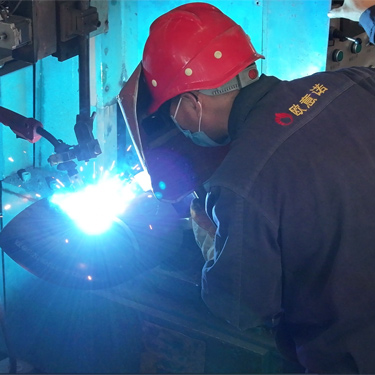
7 月 . 20, 2024 10:49
Back to list
Understanding the Functionality and Benefits of Gas Pressure Reducing Valves in Various Applications
Understanding Gas Pressure Reducing Valves
Gas pressure reducing valves (PRVs) are essential components in various gas distribution systems, ensuring safety and efficiency in the handling of gas pressure. These devices play a crucial role in controlling the pressure of gases from a high-pressure source to a lower, more manageable level suitable for consumption or further processing. This article will delve into the components, functioning, and applications of gas pressure reducing valves, highlighting their importance in industrial and residential settings.
Components of Gas Pressure Reducing Valves
A gas pressure reducing valve typically consists of several key components the valve body, diaphragm, spring, and adjustment screw. The valve body is where the high-pressure gas enters and the reduced pressure gas exits. The diaphragm acts as a responsive mechanism that reacts to changes in pressure. It expands or contracts to maintain consistent output pressure by regulating the valve's opening. The spring applies a force that keeps the diaphragm in position, while the adjustment screw allows for fine-tuning of the desired outlet pressure. Together, these components work seamlessly to ensure that gas is delivered at a safe and usable pressure.
How Gas Pressure Reducing Valves Work
When high-pressure gas enters the valve, it pushes against the diaphragm and compresses the spring. As the diaphragm moves, it adjusts the valve opening, allowing only a set amount of gas to pass through to the downstream system. If the output pressure begins to rise above the desired level, the diaphragm moves against the force of the spring, closing the valve slightly to reduce flow. Conversely, if the outlet pressure drops, the diaphragm moves down, opening the valve and allowing more gas to flow through. This dynamic interaction ensures that the pressure remains stable, adapting to fluctuations in demand.
Applications of Gas Pressure Reducing Valves
gas pressure reducing valve

Gas pressure reducing valves are widely used in various applications, including residential gas systems, industrial processes, and commercial establishments. In residential settings, they are often installed at the entrance of a home’s gas supply line to regulate the pressure for appliances such as stoves, water heaters, and furnaces. This not only ensures safe operation but also enhances the efficiency of gas consumption.
In industrial applications, PRVs are critical for processes that involve the use of gas under varying pressures, such as in chemical manufacturing, food processing, and energy production. Maintaining precise pressure levels is crucial in these environments to ensure safety and prevent equipment damage. Additionally, gas pressure reducing valves are often employed in gas pipelines and distribution networks to protect infrastructure and ensure the stable delivery of gas to end-users.
Safety Considerations
Safety is a paramount concern when dealing with gas systems. The use of pressure reducing valves significantly mitigates risks associated with high-pressure gas. By preventing excessive pressure buildup, PRVs help prevent potential hazards such as gas leaks, explosions, and equipment failures. Regular maintenance and inspection of these valves are essential to ensure their proper functioning and reliability over time.
Conclusion
In summary, gas pressure reducing valves are vital components that facilitate safe and efficient gas usage across various applications. By controlling gas pressure with agility and precision, these valves not only protect infrastructure and appliances but also enhance operational efficiency. As technology advances, the development of more reliable and sophisticated PRVs continues to support the safe management of gas systems, highlighting their indispensable role in modern society. Understanding the function and importance of gas pressure reducing valves is crucial for anyone involved in the design, implementation, or maintenance of gas systems.
Latest news
-
Unlocking The Quality Gas Pressure ReducersNewsNov.01,2024
-
The Role of Gas Pressure Reducing StationsNewsNov.01,2024
-
The Importance and Functionality of Safety Relief ValvesNewsNov.01,2024
-
The Essential Role of Safety Valves in Natural Gas ApplicationsNewsNov.01,2024
-
The Essential Role of Gas Pressure RegulatorsNewsNov.01,2024
-
Enhance Your Premium Gas FiltersNewsNov.01,2024

